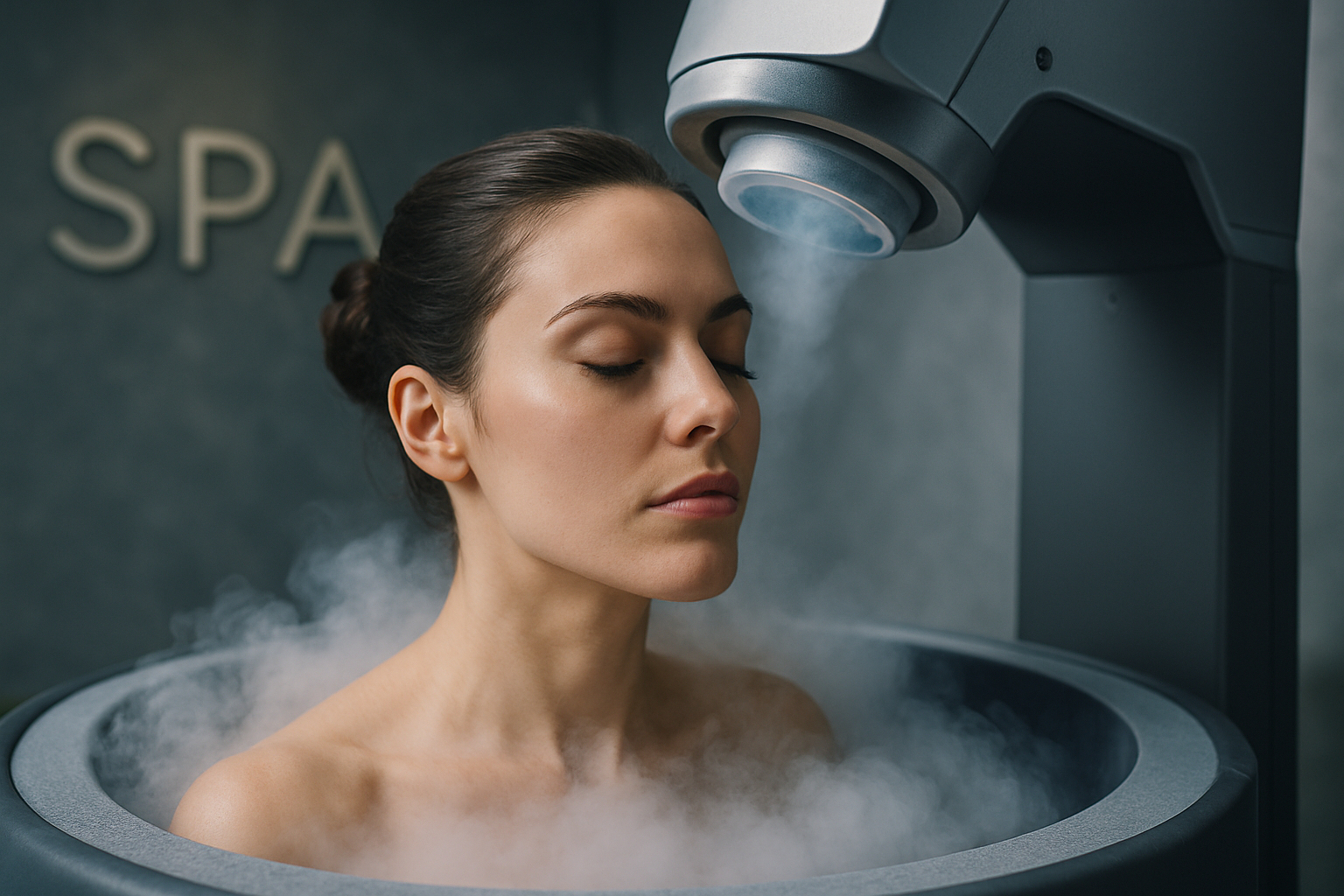Cryotherapy: The Cold Truth About Beauty's Hottest Trend
In the ever-evolving world of beauty and wellness, a chilling new practice has emerged, captivating the attention of health enthusiasts and celebrities alike. Cryotherapy, once reserved for treating sports injuries, has now frozen its place in the beauty industry. This innovative treatment involves exposing the body to extremely low temperatures, promising a range of benefits from pain relief to enhanced skin appearance. As more spas and wellness centers add cryotherapy to their menus, it's time to dive deep into the icy waters of this trend and explore its potential impact on our beauty routines and overall well-being. From its scientific foundations to its growing popularity in high-end wellness circles, cryotherapy represents a fascinating fusion of medical technology and beauty innovation that's reshaping our approach to self-care.

Initially, cryotherapy was primarily used in sports medicine to aid in recovery and reduce inflammation. Athletes would immerse themselves in ice baths after intense training sessions or competitions. The transition from sports medicine to beauty and wellness began in the early 2000s when spas in Europe started offering cryotherapy treatments to their clients, touting benefits such as improved skin tone, increased metabolism, and enhanced mood.
The Science Behind the Chill
At its core, cryotherapy works by exposing the body to extremely cold temperatures, typically between -110°C to -140°C (-166°F to -220°F), for a short period, usually two to four minutes. This extreme cold triggers several physiological responses in the body. When exposed to such low temperatures, blood vessels constrict, reducing blood flow to the extremities and redirecting it to vital organs.
Upon leaving the cryotherapy chamber, blood rushes back to the peripheral tissues, bringing with it oxygen and nutrients. This process, known as vasoconstriction followed by vasodilation, is believed to have numerous benefits. It’s thought to reduce inflammation, boost circulation, and stimulate the release of endorphins and other beneficial hormones.
From a beauty perspective, the cold exposure is said to tighten the skin, reduce the appearance of cellulite, and boost collagen production. Some proponents also claim it can accelerate metabolism, potentially aiding in weight loss efforts.
Cryotherapy in Modern Beauty Routines
The integration of cryotherapy into beauty routines has taken various forms. While whole-body cryotherapy chambers remain the most well-known, localized cryotherapy treatments have become increasingly popular in spas and dermatology clinics. These treatments target specific areas of the body, such as the face or problem areas like cellulite-prone zones.
Cryofacials, for instance, involve the application of cold air or nitrogen to the face and neck. Proponents claim this can reduce puffiness, tighten pores, and give the skin a more youthful appearance. Some high-end beauty brands have even developed at-home cryotherapy tools, such as ice rollers and cooling face masks, allowing consumers to incorporate elements of cryotherapy into their daily skincare routines.
Beyond facial treatments, cryolipolysis, often marketed under the brand name CoolSculpting, has gained popularity as a non-invasive alternative to liposuction. This procedure uses controlled cooling to freeze and eliminate fat cells in targeted areas of the body.
The Celebrity Factor and Market Growth
As with many beauty trends, celebrity endorsements have played a significant role in popularizing cryotherapy. High-profile figures like Jennifer Aniston, Daniel Craig, and Lindsay Lohan have publicly praised the benefits of cryotherapy, citing improved recovery from workouts, enhanced skin appearance, and increased energy levels.
This celebrity backing, coupled with growing consumer interest in non-invasive beauty treatments, has led to significant market growth. According to a report by Grand View Research, the global cryotherapy market size was valued at $206.6 million in 2020 and is expected to grow at a compound annual growth rate (CAGR) of 10.3% from 2021 to 2028.
The COVID-19 pandemic has further accelerated interest in wellness and immunity-boosting treatments, with cryotherapy often marketed as a way to strengthen the immune system and improve overall health.
Controversies and Considerations
Despite its growing popularity, cryotherapy is not without controversy. The U.S. Food and Drug Administration (FDA) has not cleared or approved whole-body cryotherapy devices for medical treatment of any specific medical conditions. They have also warned that cryotherapy could pose health risks, including asphyxiation, frostbite, burns, and eye injuries.
Critics argue that many of the claimed benefits of cryotherapy lack substantial scientific evidence. While some studies have shown promising results in areas like pain reduction and muscle recovery, research on its efficacy for beauty-related claims is limited.
Moreover, the treatment is not suitable for everyone. Individuals with certain health conditions, such as high blood pressure, heart problems, or pregnancy, are typically advised against using cryotherapy. The cost can also be prohibitive, with single sessions often ranging from $60 to $100, and recommended treatment plans involving multiple sessions per week.
The Future of Cryotherapy in Beauty
As the beauty industry continues to evolve, cryotherapy stands at an interesting crossroads. On one hand, its popularity shows no signs of waning, with new cryotherapy centers opening regularly and beauty brands continuing to develop cryotherapy-inspired products. The trend towards non-invasive, technologically advanced beauty treatments aligns well with cryotherapy’s positioning.
On the other hand, the industry faces pressure to provide more robust scientific evidence for its claims. As consumers become more educated and demanding about the treatments they undergo, cryotherapy providers may need to invest in more comprehensive research to validate its benefits.
Looking ahead, we may see a more nuanced approach to cryotherapy in beauty. This could involve combining cryotherapy with other treatments for enhanced effects or developing more targeted, personalized cryotherapy protocols based on individual skin types and concerns.
As with any beauty trend, the long-term success of cryotherapy will depend on its ability to deliver tangible results and adapt to changing consumer preferences. Whether it becomes a staple in beauty routines or fades into obscurity remains to be seen, but for now, cryotherapy continues to offer an intriguing, if chilly, option for those seeking the latest in beauty innovation.





